18 Dec Sumo photography at Japan’s national stadium
A couple of weeks ago I wrote about one of my favourite parts of Japanese culture (onsen, those relaxing hot volcanic baths that offer sanctuary to salarymen and travel writers alike). While I visited Tokyo I took time to enjoy something rather less sedate: a boisterous and engrossing sumo tournament in the Ryogoku Kokugikan, Japan’s national sumo wrestling stadium. It brought me my first – maybe only – chance to shoot some sumo photography. Not my usual subject!
My visit coincided with the September Championships, and I was lucky enough to have a ticket. (They sell out incredibly quickly: within a couple of minutes of accessing the sales site, the ‘best seats’ had gone, leaving me with seats rather higher and further from the action than I’d hoped. This, it turned out, wasn’t necessarily a bad thing, as wrestler after wrestler hurtled through the front rows, scattering terrified spectators in their wake.)
Sumo has a large and deeply devoted following in Japan, but is often presented as a local curiosity for tourists. It shouldn’t be a mere object of curiosity: it’s a fantastic and dramatic sport, with a theatrical dose of drama, tragedy and triumph. The pre-bout rituals, the group ceremonies and then the short bouts themselves: it ranges from meditative to explosively thrilling. The fact that the bouts sometimes take only a few seconds merely adds to the drama: you never know if you’ll see a sudden reversal of fortunes between two experienced fighters, or a protracted battle pitting raw physical strength against guile and cunning. Sumo photography promised to be as exciting as the sport itself.
All of this happens in an atmosphere of concentrated excitement. Outside the stadium crowds of fans cheer wrestlers as the pass in their yukata robes. Bustling food markets throughout the corridors keep spectators fuelled with bento (of variable quality), beer and sake. And banks of sports photographers light the stage with strobe flashes, aiming to catch the decisive moment as fighters clash.
I’m not a sports photographer, but I pack a good sports lens (Olympus’s superb 40-150mm F2.8 PRO, giving a 300mm range in 35mm terms for my OM-D E-M1 Mk II body). I spent a good chunk of the tournament shooting sumo photography – perhaps the most dynamic set of pictures I’ve made this year. I might not have had the ‘best seats’ in the house – but I felt as close to the action as I could be.


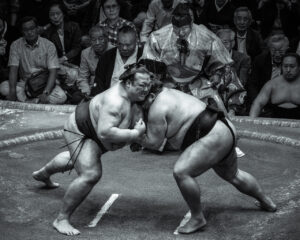
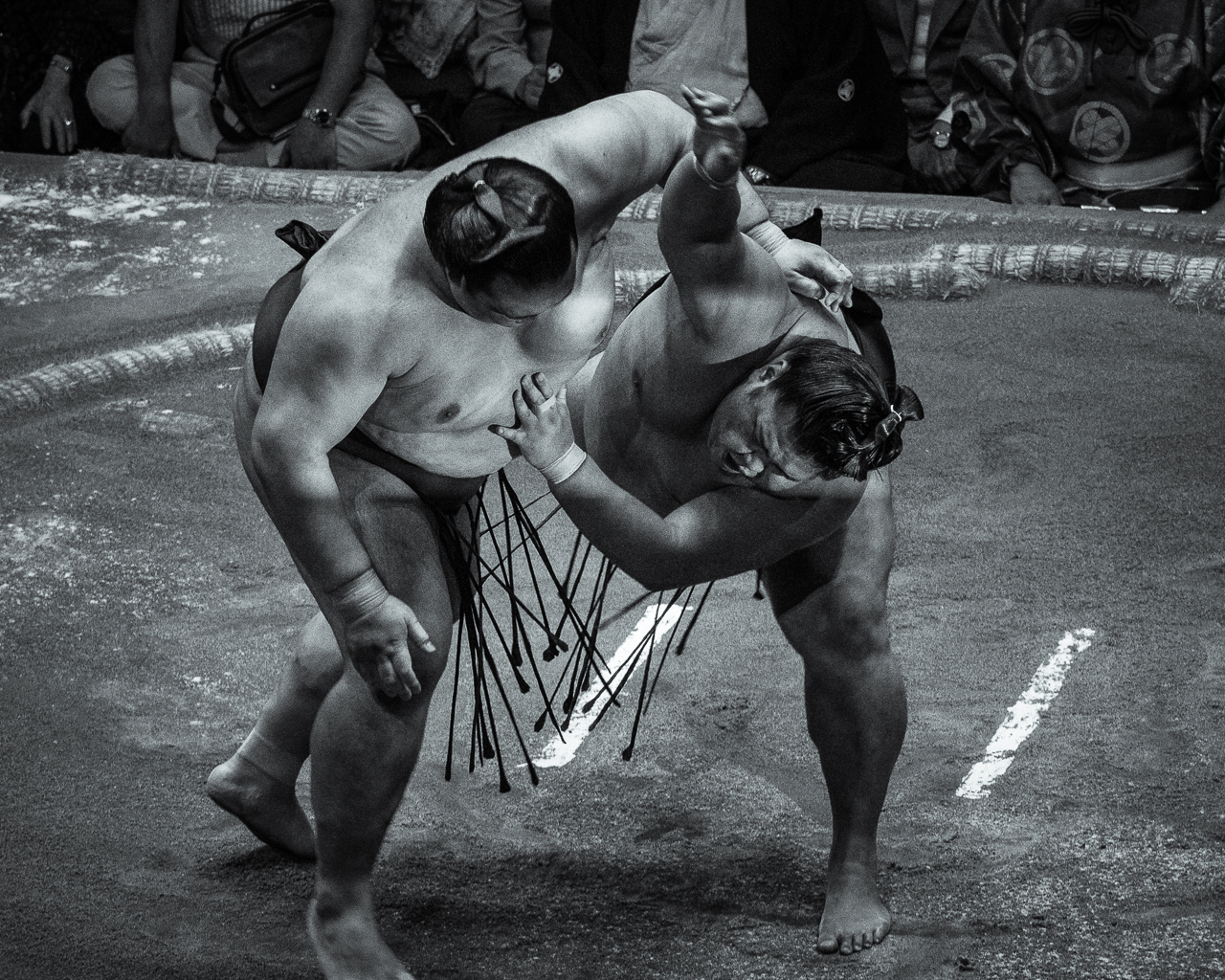
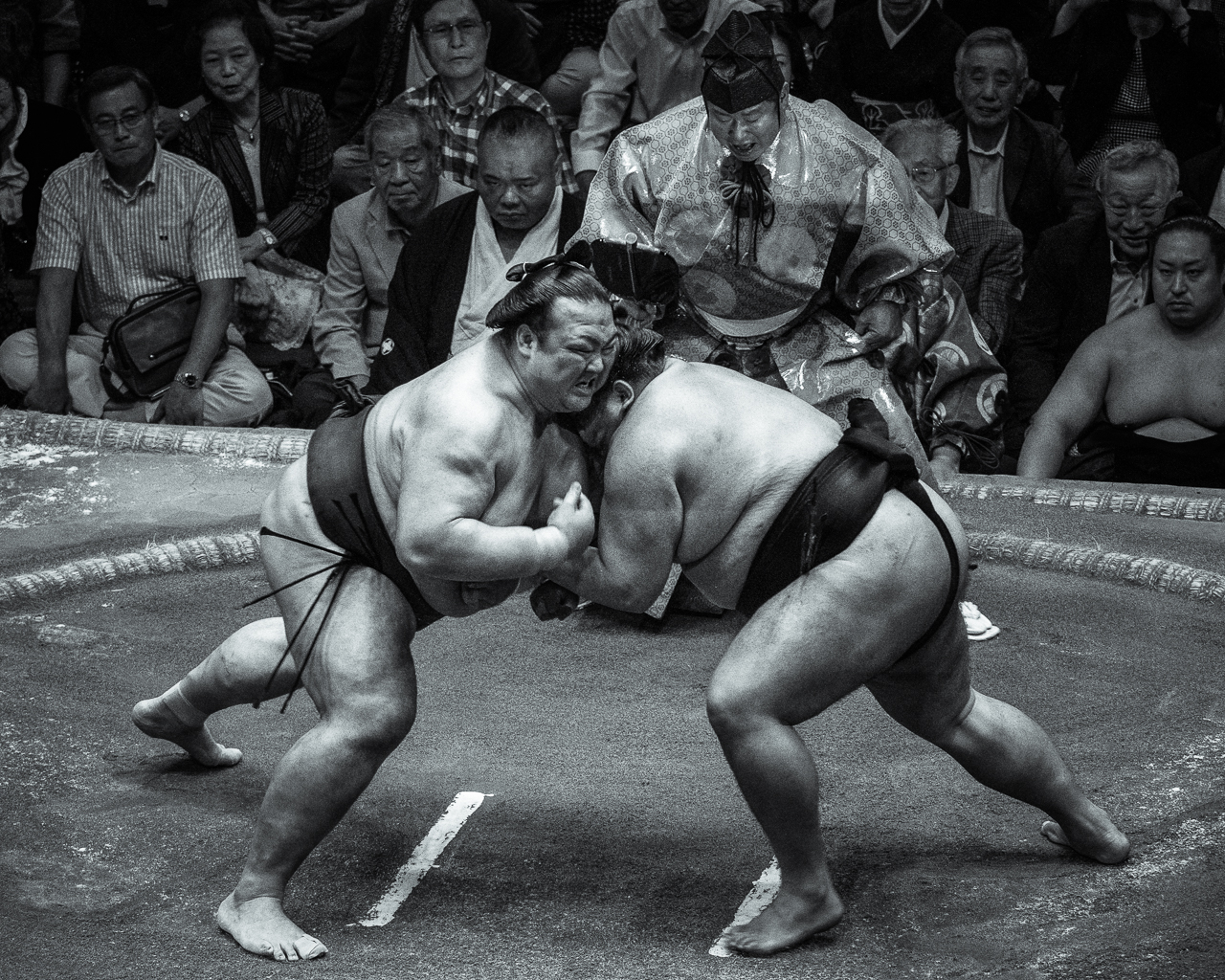
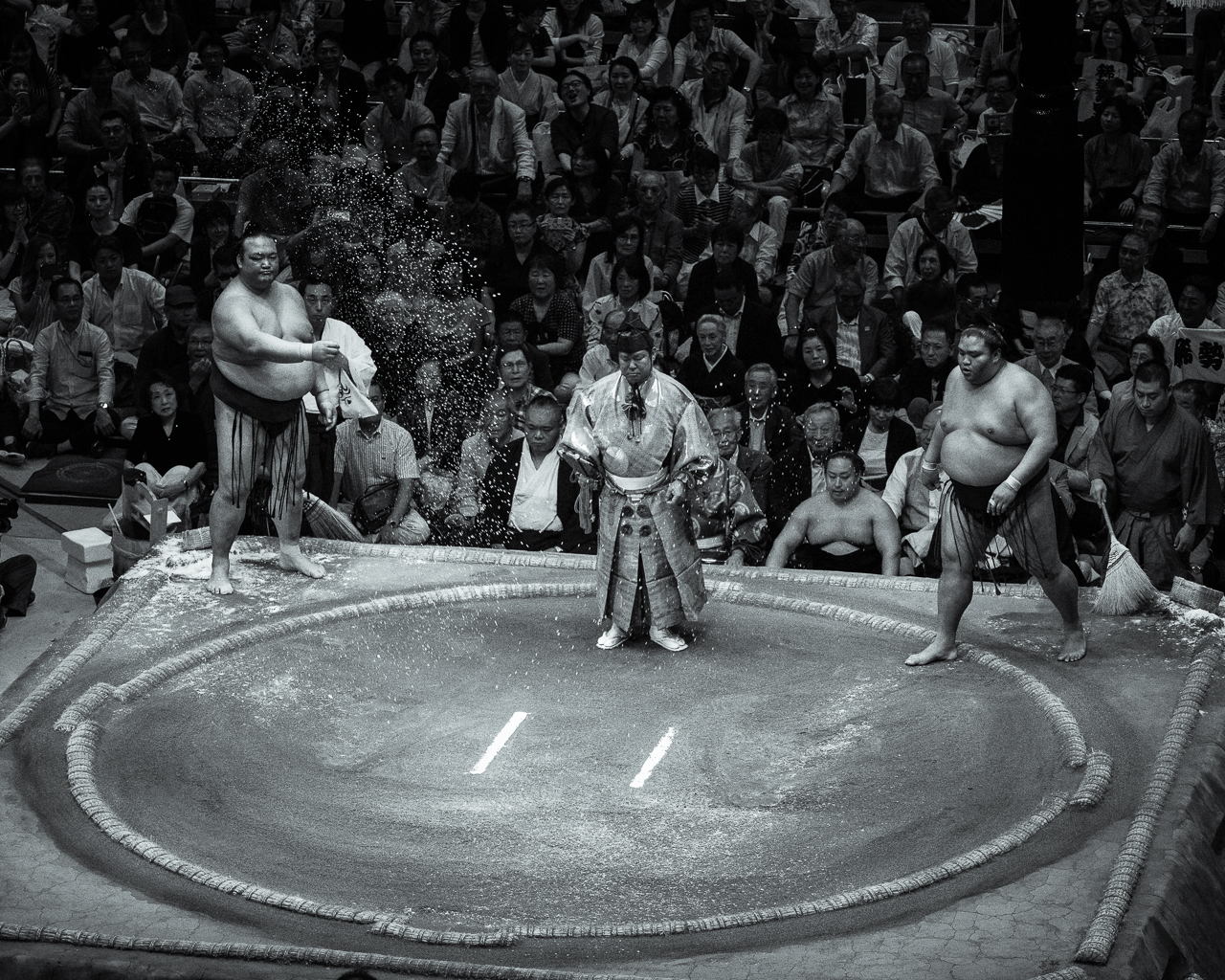
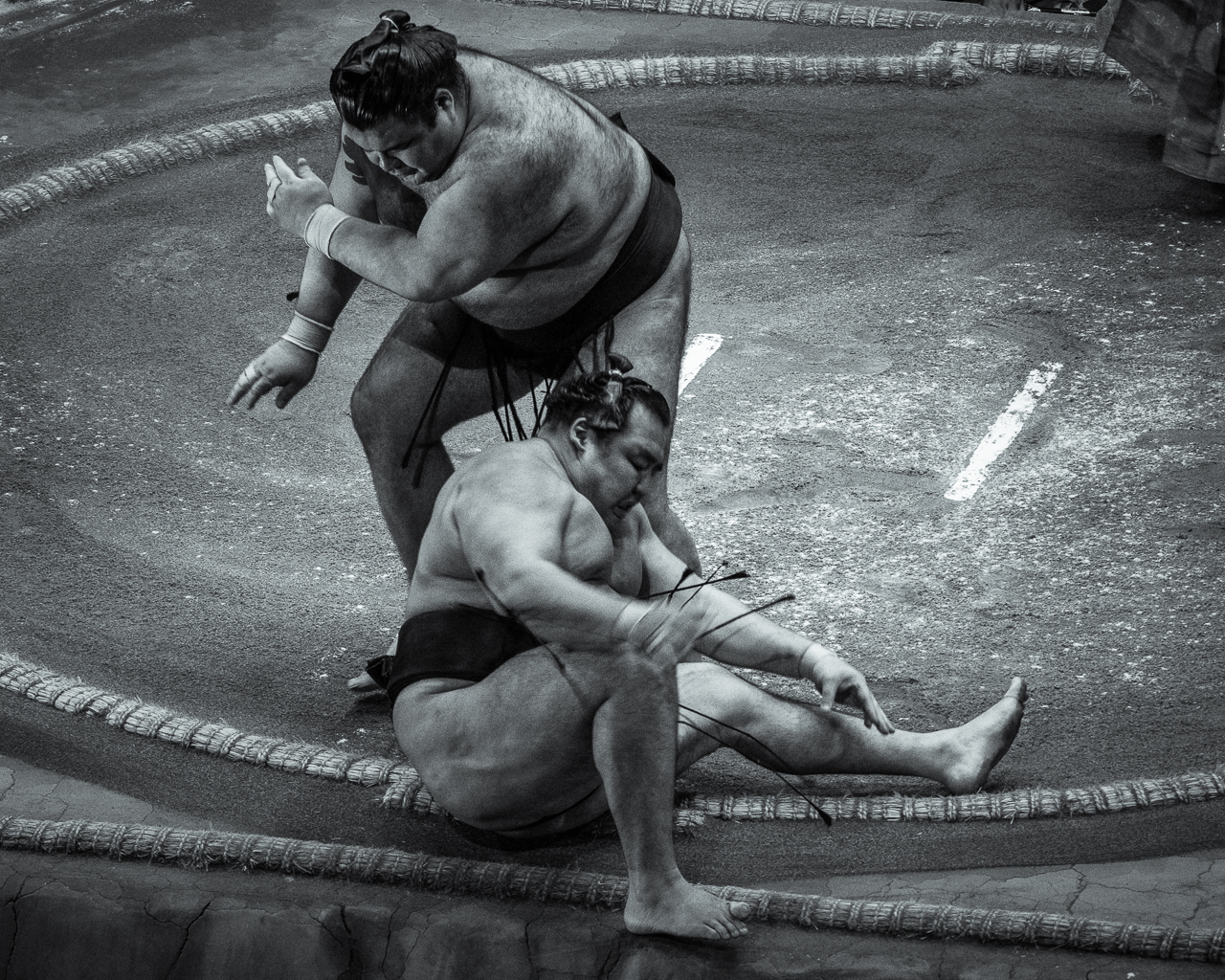
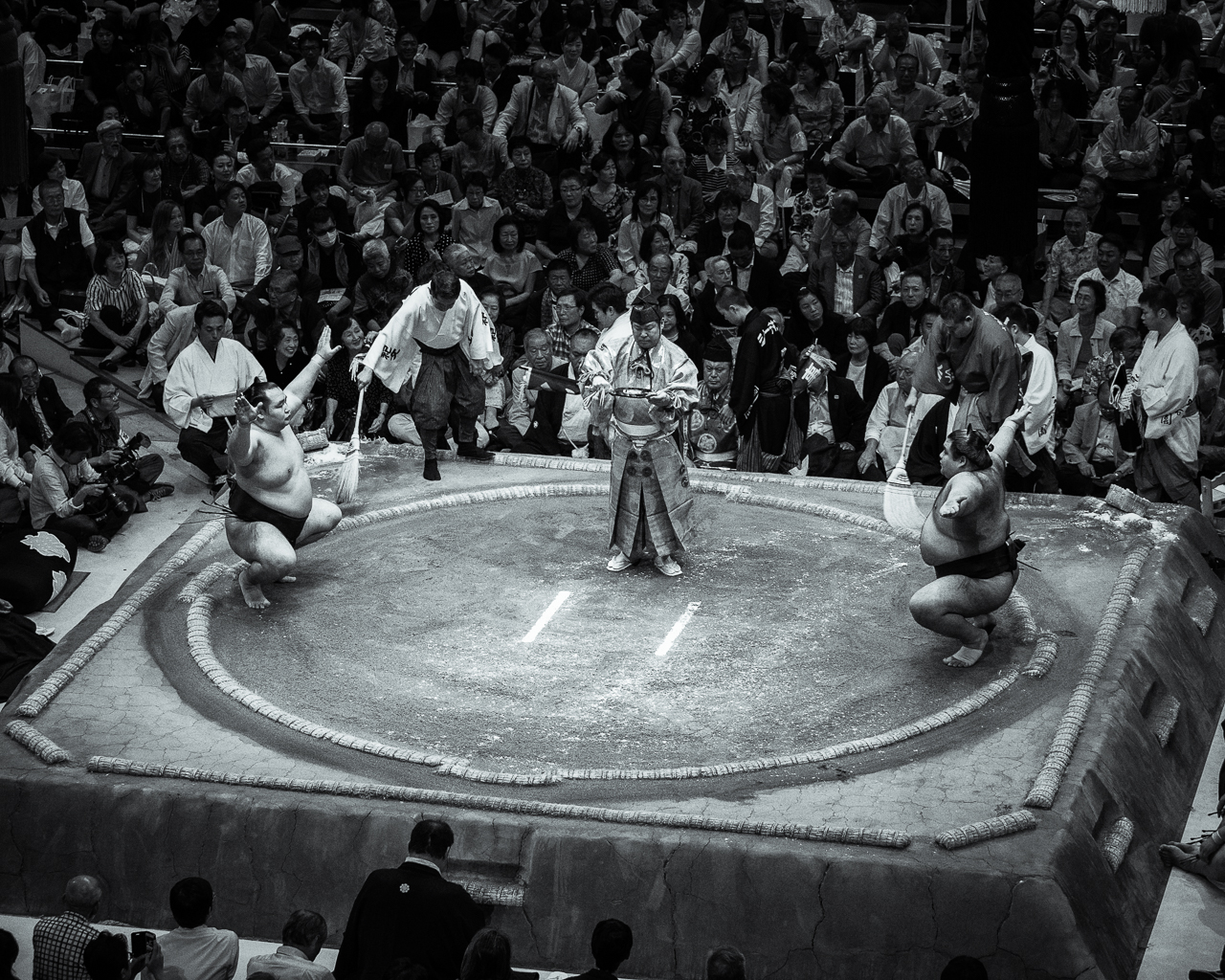

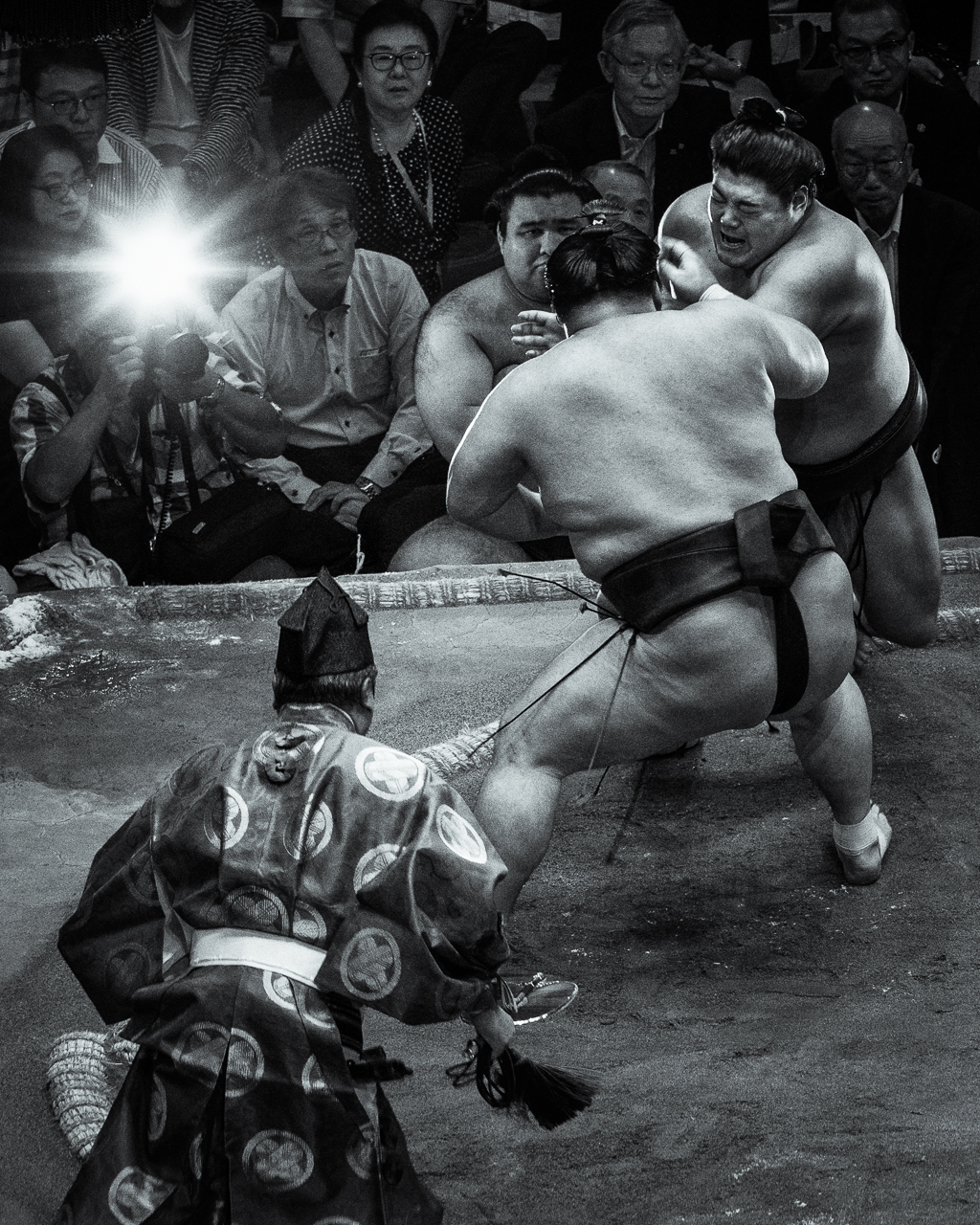
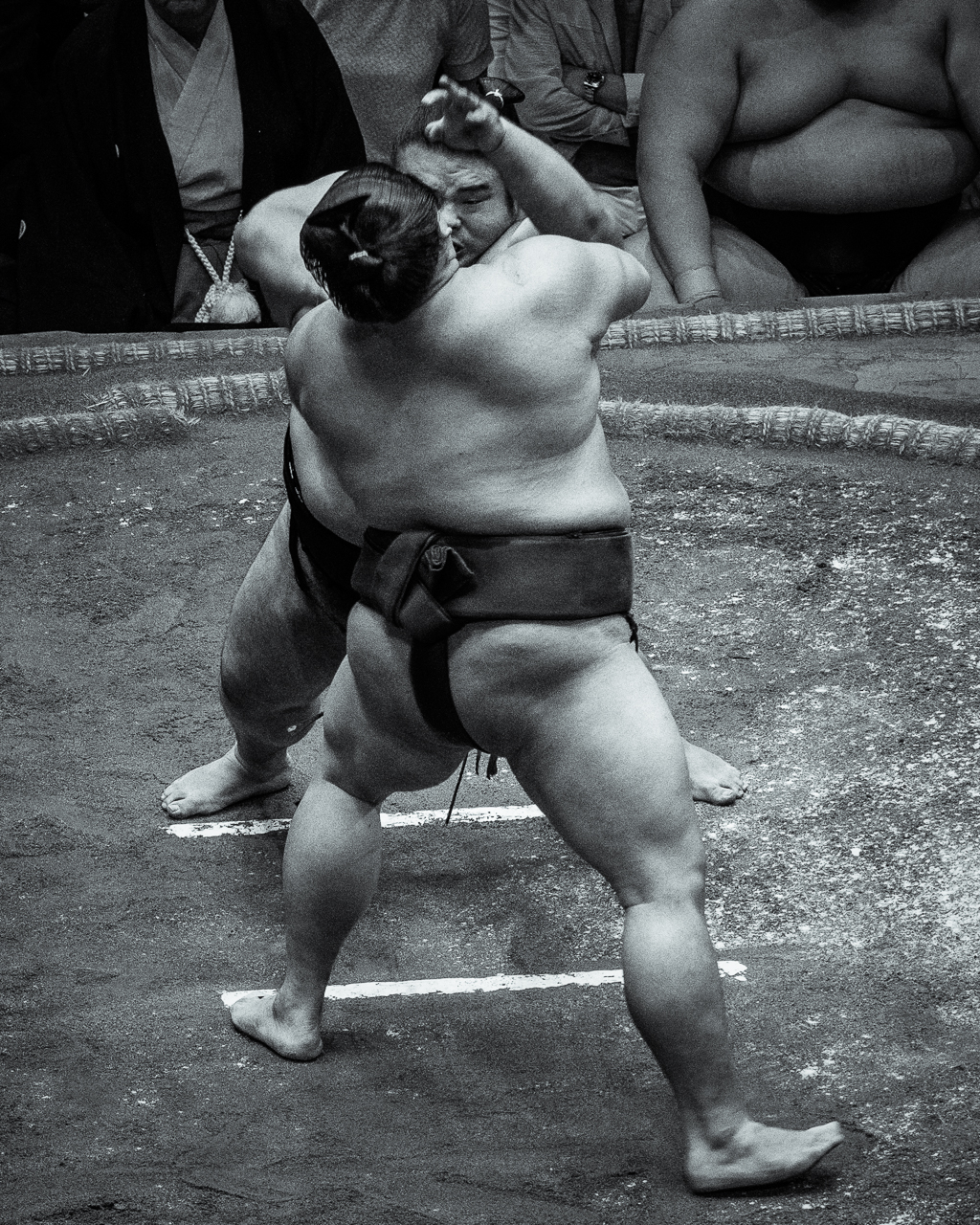

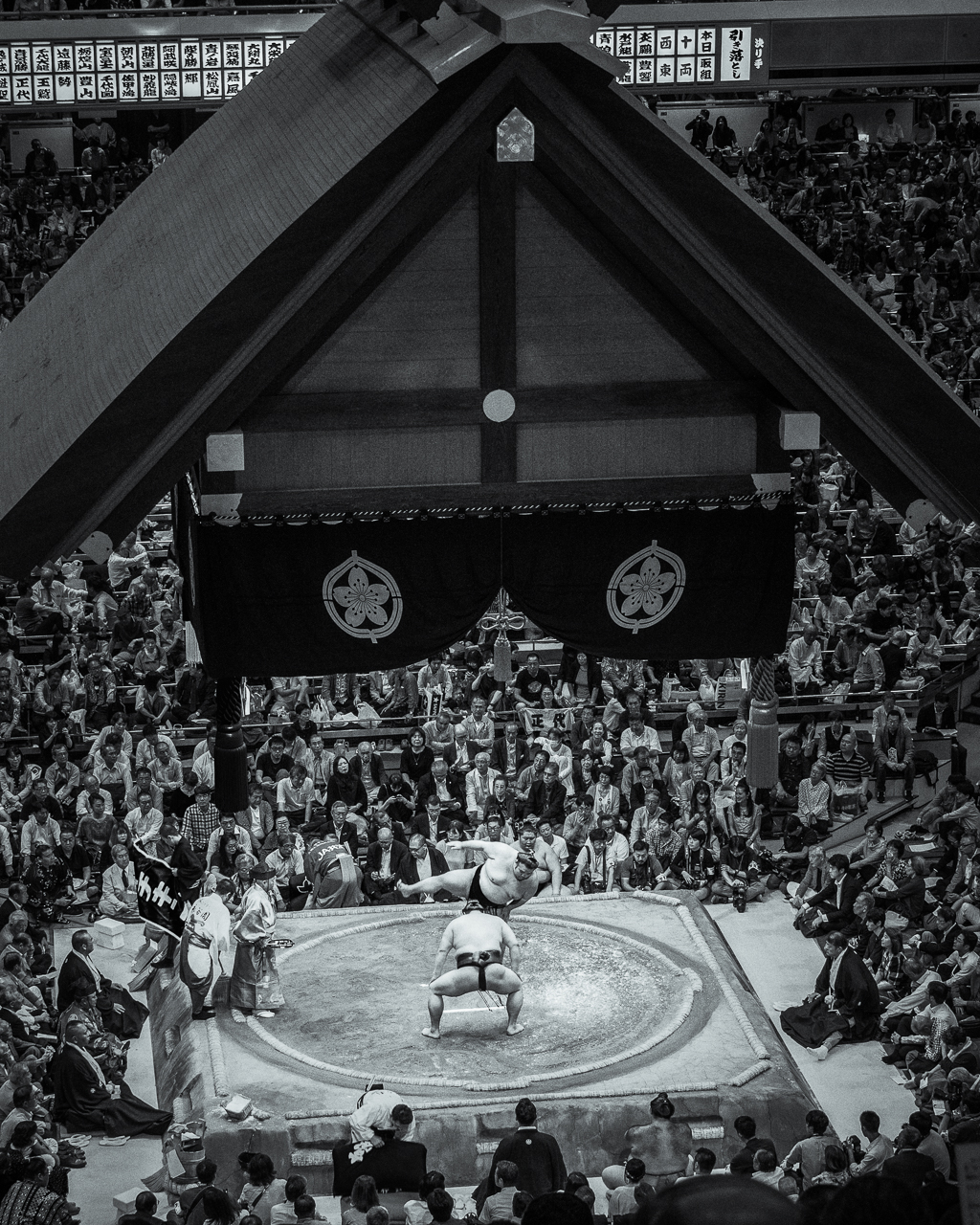
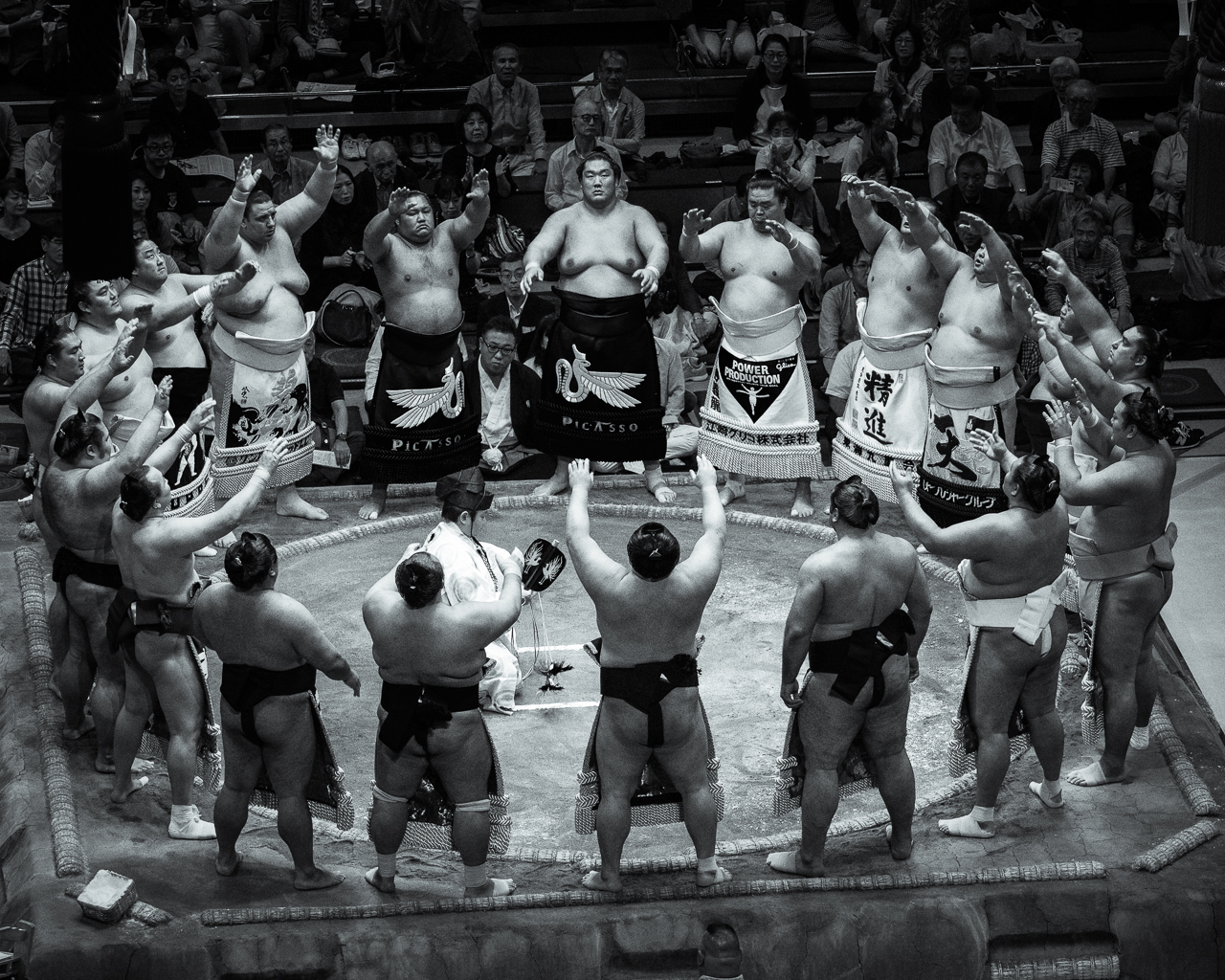

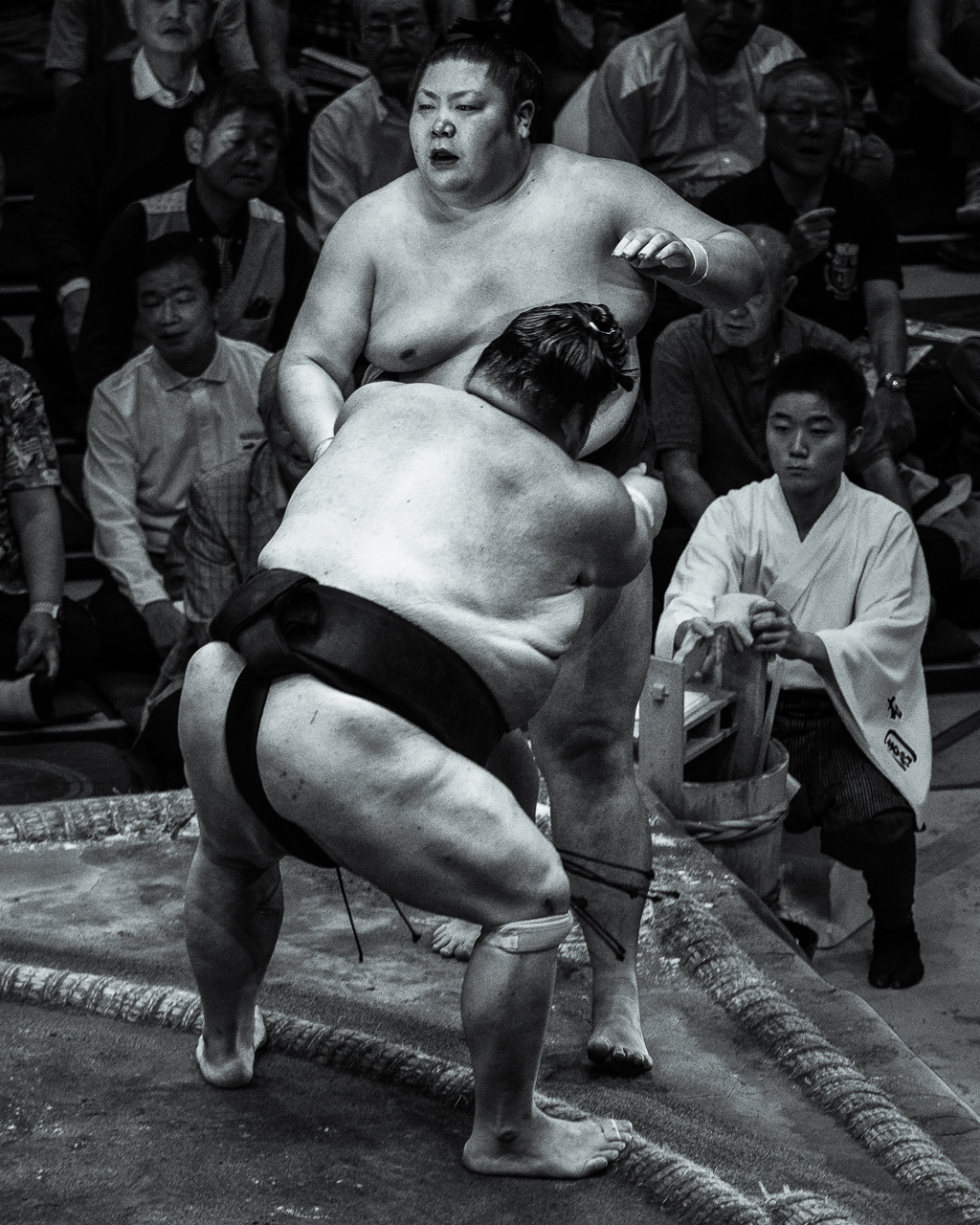

No Comments